Text
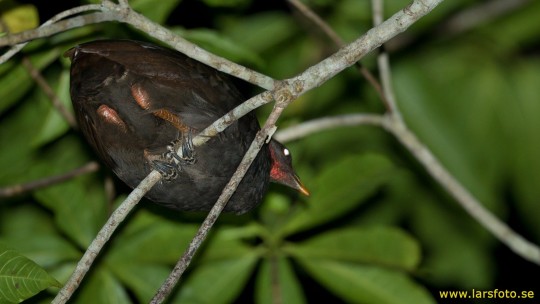
[769/10,977] Biak Scrubfowl - Megapodius geelvinkianus
Also known as: Biak Megapode
Order: Galliformes Family: Megapodiidae (megapodes)
Photo credit: Lars Petersson via Macaulay Library
13 notes
·
View notes
Text




217) Megapodius geelvinkianus; nogal namorzynowy, Biak scrubfowl, Biak megapode - gatunek ptaka z rodziny Megapodiidae. Występuje wyłącznie na wyspach Biak, Mios Korwar, Numfor, Manim i Mios Num w regionie Papui Zachodniej w Indonezji.
Jego naturalne siedliska to subtropikalne lub tropikalne wilgotne lasy nizinne i subtropikalne lub tropikalne wilgotne zarośla. Jest zagrożony utratą siedlisk. Niektórzy taksonomowie uważają go za podgatunek dusky megapode, inni za podgatunek orange-footed shrubfowl, ale coraz częściej jest postrzegany jako odrębny gatunek.
0 notes
Text
Megapodius

Orange-Footed Scrubfowl, M. reinwardt, by Bernard Dupont, CC BY-SA 2.0
PLEASE SUPPORT US ON PATREON. EACH and EVERY DONATION helps to keep this blog running! Any amount, even ONE DOLLAR is APPRECIATED! IF YOU ENJOY THIS CONTENT, please CONSIDER DONATING!
Name: Megapodius
Status: Extant
First Described: 1823
Described By: Gaimard
Classification: Dinosauria, Saurischia, Eusaurischia, Theropoda, Neotheropoda, Averostra, Tetanurae, Orionides, Avetheropoda, Coelurosauria, Tyrannoraptora, Maniraptoriformes, Maniraptora, Pennaraptora, Paraves, Eumaniraptora, Averaptora, Avialae, Euavialae, Avebrevicauda, Pygostylia, Ornithothoraces, Euornithes, Ornithuromorpha, Ornithurae, Neornithes, Neognathae, Galloanserae, Pangalliformes, Galliformes, Megapodiidae
Referred Species: M. pritchardii (Tongan Megapode, Extant), M. laperouse (Micronesian Megapode, Extant), M. nicobariensis (Nicobar Megapode, Extant), M. cumingii (Philippine Megapode, Extant), M. bernsteinii (Sula Megapode, Extant), M. tenimberensis (Tanimbar Megapode, Extant), M. freycinet (Dusky Megapode, Extant), M. geelvinkianus (Biak Scrubfowl, Extant), M. eremita (Melanesian Megapode, Extant), M. layardi (Vanuatu Megapode, Extant), M. affinis (New Guinea Scrubfowl, Extant), M. reinwardt (Orange-Footed Scrubfowl, Extant), M. molistructor (Pile-Builder Scrubfowl, Extinct), M. amissus (Viti Levu Scrubfowl, Extinct)

Micronesian Megapode, M. laperouse, by Michael Lusk, CC BY-SA 2.0
Megapodius is, by far, the largest genus of Megapodes, with many species making up its genus. Most of these species are alive today, though there are two distinct extinct ones as well. These birds are commonly called Scrubfowl, and, like all Megapodes, are distinctly unique due to their highly specialized method of egg incubation. M. molistructor, the Pile-Builder Megapode, is an extinct species from New Caledonia and Tonga, known from only about 12,000 years ago on, in the Holocene of the Quaternary. Weighing about 3.5 kilograms, it was the heaviest species in this genus, and one of the largest ground-dwelling birds of the islands it lived on. This bird probably went extinct due to the arrival of human settlers about 3500 years ago. The other extinct Speices, M. amissus, the Viti Levu Scrubfowl, was a Megapode known from Fiji during the Holocene, about the size of the Orange-Footed Scrubfowl, though with more robust legs and reduced wings, indicating flightlessness. It, too, went extinct due to overhunting and other human activity.
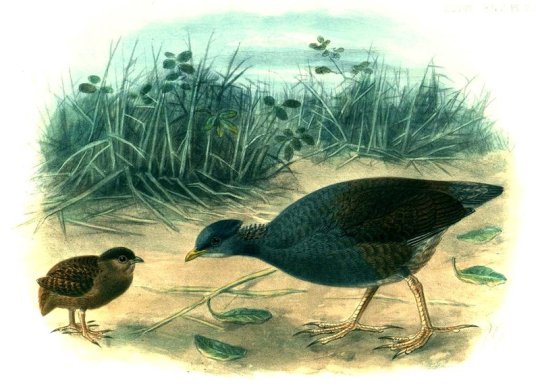
Tongan Megapode, M. pritchardii, by Walter Lawry Buller, in the Public Domain
The Tongan Megapode is an endangered species known from Tonga, the only remaining species of Megapode still known from these islands, even though multiple species were present prior to the arrival of humans. Their remote habitat made populations of these birds vulnerable to human activity. They live primarily in tropical lowland forests, and they use the warm volcanic soil of their habitats to incubate their eggs. The baby birds are able to fly immediately upon hatching. These birds are threatened due to human hunting and habitat reduction.
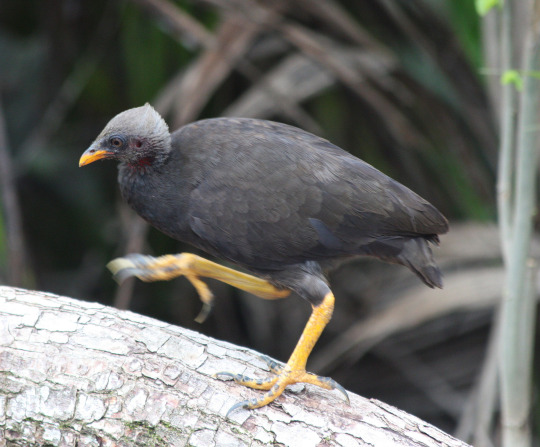
Micronesian Megapode, M. laperouse, by Michael Lusk, CC BY-SA 2.0
The Micronesian Megapode is another endangered species, about 38 centimeters in length, from the Marianas Islands. Medium-sized birds, they have pale heads, dark bodies, and bright yellow legs. They are usually found in thickets and lowland scrub, and they’re very shy and secretive. They breed after the monsoon season and make large mounds of debris to lay their eggs, sometimes multiple females using the same mound. They are protected, but the introduction of mammalian predators have greatly reduced their populations.
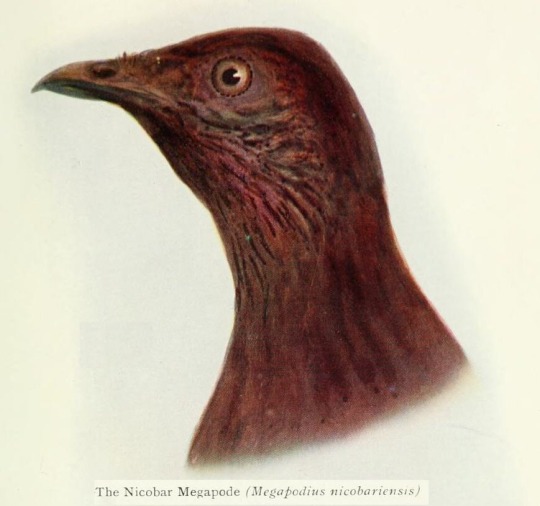
Nicobar Megapode, M. nicobariensis, by R. W. Shufeldt, in the Public Domain
The Nicobar Megapode is a vulnerable species known from the Nicobar Islands of India. It builds large nest mounds, like the other species in this genus; but are very secretive in how they do so - they primarily build mounds near the coast with coral sand and plant material, and the mounds are often reused. The young birds are fully feathered, and can fly as soon as their feathers dry up. They mainly move around in thick jungle during the day, and go out onto the shore of the ocean at night, mainly walking in small groups or pairs. They eat both plant and animal material, ingesting grit to aid in digestion. They are brownish birds, and are primarily threatened due to habitat loss and human activity.
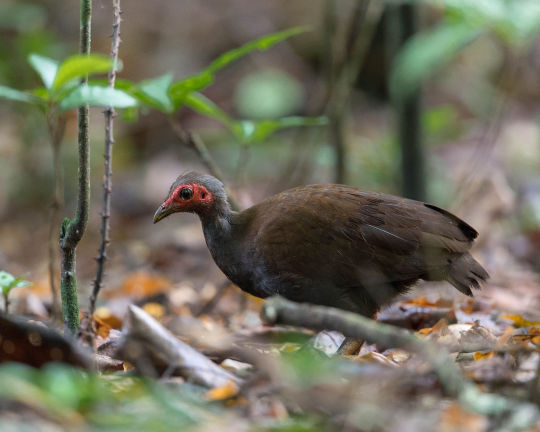
Philippine Megapode, M. cumingii, by Jason Thompson, CC BY 2.0
The Philippine Megapode, which is such a little cutie, is a non-threatened species found in the Philippines, Borneo, and Sulawesi, mainly in dry forest, moist lowland forest, and mountain forests.
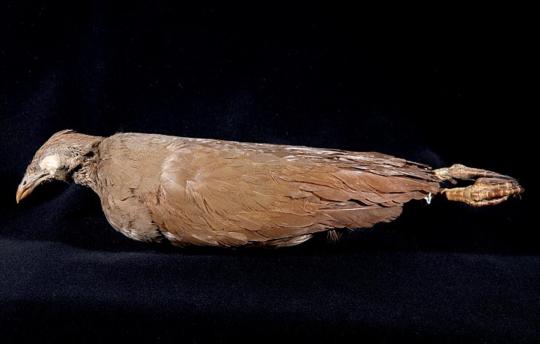
Sula Megapode, M. bernsteinii, by Huub Veldhuijzen van Zanten, CC BY-SA 3.0
The Sula Megapode, is a vulnerable species known on the Banggai and Sula Islands in Indonesia, primarily in tropical and subtropical forest, both dry and wet, as well as mangrove forests. As such, it is extensively threatened with habitat destruction. These birds are reddish brown, with short pointed crests, and they grow up to 35 centimeters in length. They forage in pairs, or sometimes small groups, mainly on roots and invertebrates. They perform mating dances, to an extent, where all the birds call out together, and then build cone-shape mounds over rotting vegetation to keep the eggs warm. The Tanimbar Megapode, M. tenimberensis, on the other hand, is a near-threatened species from the Tanimbar Islands of Indonesia, about the size of a domestic chicken. It’s primarily found in forest and scrubland, and feeds on fallen fruit, seeds, and invertebrates.

Dusky Megapode, M. freycinet, by Nicolas Huet, in the Public Domain
The Dusky Megapode, is a 41 centimeters long black bird with a short pointed crest and red facial skin. They look similar across the sexes, and build mounds made of leaves, sand, gravel, and sticks, as large as 11 meters in diameter. They are very common birds and not considered currently threatened with extinction.
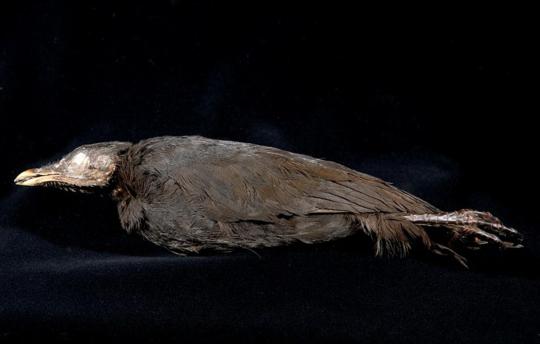
Biak Scrubfowl, M. geelvinkianus, by Huub Veldhuijzen van Zanten, CC BY-SA 3.0
The Biak Scrubfowl is a vulnerable species known from islands in West Papua, Indonesia, measuring about 36 centimeters in length, with dark grey feathers and a blueish face. They live in lowland tropical forests and some shrublands, which has lead to its threatened position due to habitat loss.
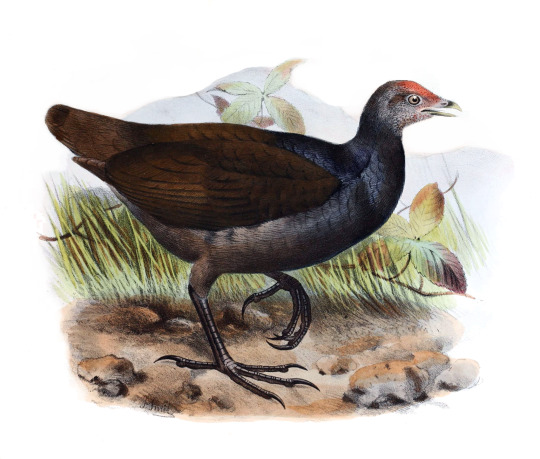
Melanesian Megapode, M. eremita, by Joseph Smit, in the Public Domain
The Melanesian Megapode is a nonthreatened scrubfowl species from Papua New Guinea and the Solomon Islands, living in tropical lowland forests and some mountain forests. It has brown and blue feathers, and a red patch on its head.

Vanuatu Megapode, M. layardi, by W. R. Ogilvie-Grant, in the Public Domain
The Vanuatu Megapode is a vulnerable species known from the island of Vanuatu, living in subtropical and tropical lowland forest. Unfortunately, it’s threatened by habitat loss and egg hunting. The New Guinea Scrubfowl, N. decollatus, on the other hands, is a poorly studied nonthreatened Megapode from tropical lowland forests and mountain forests in New Guinea, but unfortunately it isn’t very well documented.
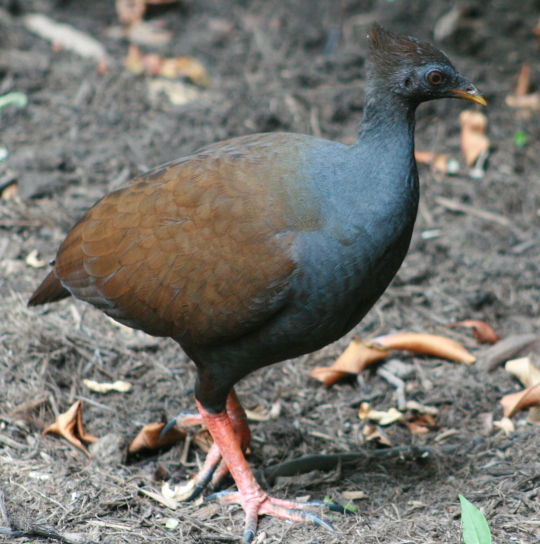
Orange-Footed Scrubfowl, M. reinwardt, by Toby Hudson, CC BY-SA 3.0
Finally, the Orange-Footed Scrubfowl is a non-threatened species from the Sunda Islands, New Guinea, and Australia. The size of a chicken, it has brown and blue feathers, with orange feet, hence its name. They also have distinctive pointy crests. They live in forest and scrubland habitat, and make mounds of sand and leaf litter that can reach up to 4.5 meters in height. They mainly eat seeds, fallen fruit, and some invertebrates.
Buy the author a coffee: http://ko-fi.com/kulindadromeus
Sources:
https://en.wikipedia.org/wiki/Scrubfowl
https://en.wikipedia.org/wiki/Pile-builder_megapode
https://en.wikipedia.org/wiki/Viti_Levu_scrubfowl
https://en.wikipedia.org/wiki/Tongan_megapode
https://en.wikipedia.org/wiki/Micronesian_megapode
https://en.wikipedia.org/wiki/Nicobar_megapode
https://en.wikipedia.org/wiki/Philippine_megapode
https://en.wikipedia.org/wiki/Sula_megapode
https://en.wikipedia.org/wiki/Tanimbar_megapode
https://en.wikipedia.org/wiki/Dusky_megapode
https://en.wikipedia.org/wiki/Biak_scrubfowl
https://en.wikipedia.org/wiki/Melanesian_megapode
https://en.wikipedia.org/wiki/Vanuatu_megapode
https://en.wikipedia.org/wiki/New_Guinea_scrubfowl
https://en.wikipedia.org/wiki/Orange-footed_scrubfowl
#megapodius#scrubfowl#megapode#dinosaur#chicken#pheasant#birblr#palaeoblr#megapodius pritchardii#tongan megapode#megapodius laperouse#micronesian megapode#megapodius nicobariensis#nicobar megapode#megapodius cumingii#philippine megapode#megapodius bernsteinii#sula megapode#megapodius tenimberensis#tanimbar megapode#megapodius freycinet#dusky megapode#megapodius geelvinkianus#biak scrubfowl#megapodius eremita#melanesian megapode#megapodius layardi#vanuatu megapode#megapodius affinis#new guinea scrubfowl
45 notes
·
View notes